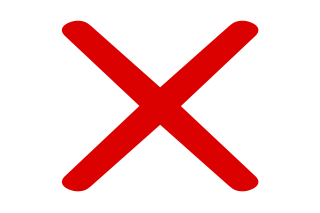
Angola, officially the Republic of Angola, is a country on the west-central coast of Southern Africa. It is the second-largest Lusophone (Portuguese-speaking) country in both total area and population and is the seventh-largest country in Africa. It is bordered by Namibia to the south, the Democratic Republic of the Congo to the north, Zambia to the east, and the Atlantic Ocean to the west. Angola has an exclave province, the province of Cabinda, that borders the Republic of the Congo and the Democratic Republic of the Congo. The capital and most populous city is Luanda.

Angola was first settled by San hunter-gatherer societies before the northern domains came under the rule of Bantu states such as Kongo and Ndongo. In the 15th century, Portuguese colonists began trading, and a settlement was established at Luanda during the 16th century. Portugal annexed territories in the region which were ruled as a colony from 1655, and Angola was incorporated as an overseas province of Portugal in 1951. After the Angolan War of Independence, which ended in 1974 with an army mutiny and leftist coup in Lisbon, Angola achieved independence in 1975 through the Alvor Agreement. After independence, Angola entered a long period of civil war that lasted until 2002.

Battle of Mbwila occurred on 29 October 1665 in which Portuguese forces defeated the forces of the Kingdom of Kongo and decapitated king António I of Kongo, also called Nvita a Nkanga.

The Kingdom of Kongo was a kingdom in Central Africa. It was located in present-day northern Angola, the western portion of the Democratic Republic of the Congo, Southern of Gabon and the Republic of the Congo. At its greatest extent it reached from the Atlantic Ocean in the west to the Kwango River in the east, and from the Congo River in the north to the Kwanza River in the south. The kingdom consisted of several core provinces ruled by the Manikongo, the Portuguese version of the Kongo title Mwene Kongo, meaning "lord or ruler of the Kongo kingdom", but its sphere of influence extended to neighboring kingdoms, such as Ngoyo, Kakongo, Loango, Ndongo, and Matamba, the latter two located in what is Angola today.
The Kingdom of Matamba (1631–1744) was an African state located in what is now the Baixa de Cassange region of Malanje Province of modern-day Angola. Joined to the Kingdom of Ndongo by Queen Nzinga in 1631, the state had many male and female rulers. It was a powerful kingdom that long resisted Portuguese colonisation attempts, but was integrated into Portuguese Angola in the late nineteenth century.

This article is a comprehensive list of all the actual possessions of the Portuguese Empire.
The Battle of Kitombo was a military engagement between forces of the BaKongo state of Soyo, formerly a province of the Kingdom of Kongo, and the Portuguese colony of Angola on 18 October 1670. Earlier in the year a Portuguese expeditionary force had invaded Soyo with the intention of ending its independent existence. The Soyo were supported by the Kingdom of Ngoyo, which provided men and equipment, and by the Dutch, who provide guns, light cannon and ammunition. The combined Soyo-Ngoyo force was led by Estêvão Da Silva, and the Portuguese by João Soares de Almeida. Both commanders were killed in the battle, which resulted in a decisive victory for Soyo. Few, if any, of the invaders escaped death or capture.
The colonial history of Angola is usually considered to run from the appearance of the Portuguese under Diogo Cão in 1482 (Congo) or 1484 until the independence of Angola in November 1975. Settlement did not begin until Novais's establishment of São Paulo de Loanda (Luanda) in 1575, however, and the Portuguese government only formally incorporated Angola as a colony in 1655 or on May 12, 1886.
The Kongo Civil War (1665–1709) was a war of succession between rival houses of the Kingdom of Kongo. The war waged throughout the middle of the 17th and 18th centuries pitting partisans of the House of Kinlaza against the House of Kimpanzu. Numerous other factions entered the fray claiming descent from one or both of the main parties such as the Água Rosada of Kibangu and the da Silva of Soyo. By the end of the war, Kongo's vaunted capital had been destroyed and many Bakongo were sold into the Trans-Atlantic Slave Trade.
The Battle of Mbidizi River was a military engagement in June 1670 between forces of the County of Soyo and those of the Portuguese colony of Angola during the Kongo Civil War. The engagement was part of a military campaign to break the power of Soyo in the region. The Portuguese won a decisive victory, inflicting heavy casualties and killing the Soyon leader.
The military history of Angola is marked by a series of conflicts rooted in tribal conflicts, colonialism and the Cold War. During the Cold War, Angola was involved in struggles between Western powers and South Africa with the help of the Soviet Union and Cuba.

Portuguese Angola refers to Angola during the historic period when it was a territory under Portuguese rule in southwestern Africa. In the same context, it was known until 1951 as Portuguese West Africa.

M'banza-Kongo, is the capital of Angola's northwestern Zaire Province with a population of 148,000 in 2014. M'banza Kongo was the capital of the Kingdom of Kongo since its foundation before the arrival of the Portuguese in 1483 until the abolition of the kingdom in 1915, aside from a brief period of abandonment during civil wars in the 17th century. In 2017, M'banza Kongo was declared a UNESCO World Heritage Site.
Rafael I Nzinga a Nkanga was a ruler of the Kingdom of Kongo during its civil war. He ruled from 1670 to 1673.
This page is based on this
Wikipedia article Text is available under the
CC BY-SA 4.0 license; additional terms may apply.
Images, videos and audio are available under their respective licenses.







